Over the last year, we have been studying how the physical impacts of climate change might affect the financial markets and Americans’ welfare. We were surprised to learn that even where municipalities know they are in harm’s way, they can readily borrow money for future infrastructure because the market knows that if climate-related disasters happen, the city or county will be bailed out. If true, this is a costly path. Not only will climate change hurt our welfare, but the practice of federal bailouts will amplify those dangers. We are already seeing warning signs. Natural disasters cost the United States $95 billion in 2020, double the 2019 level, in part because the country saw a record number of Atlantic hurricanes. The Federal Emergency Management Agency (FEMA), on the front lines when disaster strikes, has plausibly become the nation’s most important administrative agency.
Effective disaster policy requires striking a balance. On the one hand, humanitarian responses are essential in a just society, and research shows those most affected by disasters have the least ability to absorb and rebound from shocks. When disaster strikes, government must stand ready to help. On the other hand, the act of helping can invite danger — when people know a government bailout is likely, they might build valuable houses near the ocean and avoid the full consequences of their choice if that house get flattened by a hurricane.
Getting that balance right is rapidly becoming a central political challenge surrounding climate change. In new research, we develop the foundation needed to strike a politically viable balance that can help make the country safer over the long haul. In particular, we look at the federal budget and the programs implicated by climate-related disasters. How much does the federal government spend rebuilding communities once they are hit, and how does that funding compare with investments in resilience that would actually lower the nation’s exposure to climate change? Simple rebuilding can create the perverse incentives that invite danger.
Like many profound yet simple questions, this one is hard to answer because the relevant agencies and programs are diverse and spread across the federal government and states. We looked at disaster assistance programs, where FEMA dominates, along with infrastructure investment programs (e.g., at the Army Corps of Engineers) and federal insurance schemes for flood and crops.
All told, as best we can tell, the ratio of recovery to resilience spending is about seven to one: For every $7 spent on straightforward disaster recovery, only about $1 is spent on resilience against future hazards. For a nation about to experience substantial impacts from climate change, that ratio is probably way out of whack — overweighting spending for rebuilding in ways that don’t address the underlying need for a lot more resilience. This imbalance is particularly striking in light of evidence that money spent on resilience has a huge economic return — $6 of benefit for every dollar of expense.
Wanted: Reform
Fixing this problem requires efforts on many fronts. One is improving the ability of government — and reformers — to understand what’s at stake in federal policy. A government-wide periodic evaluation of spending on climate-related weather impacts is a start, and the effort could readily build on data already being collected by the Government Accountability Office (or GAO, part of Congress) and FEMA (in the executive branch).
What’s missing is an assessment of that spending in light of the looming impacts of climate change. At least every four years, the U.S. must conduct a National Climate Assessment. The most recent, published in 2018, examines climate impacts mostly from a scientific angle. But it’s crucial to study whether and how U.S. policies make the possible impacts of climate change even worse. In our work, we have found that the plausible economic impacts of climate change later this century could be 1,000 times greater on average (with lots of variation around the country) than today’s annual FEMA spending on infrastructure damage from climate-related disasters. Total estimated economic impacts are not the same thing as disaster payments, but the magnitude of the losses, and the fact that these future damages are concentrated in the same geographies where FEMA money is currently being spent, are warning signs for investors and communities. Failure to get more resilient and to keep disaster spending in check could have catastrophic implications for communities and for the federal budget.
Failure to get more resilient and to keep disaster spending in check could have catastrophic implications for communities and for the federal budget.
Information is one thing. Using that information to chart new disaster policies is a political minefield, since large sums of funding are at stake. Even the declaration of a “disaster” is a political act — not merely a fact of nature — because it unlocks government funds. For example, states that are political battlegrounds are twice as likely to get disaster declarations, even after controlling for a slew of other factors such as objective measures of disaster costs.
Big reforms are unlikely except in the context of a conspicuous failure — a massive disaster. Until that political window opens, there are too many special interests that gain too much from today’s system to do better than marginal reforms. For example, recent reporting indicates that FEMA’s long-awaited Risk Rating 2.0, which would update how federal flood insurance premiums are calculated, will be delayed yet again due to concerns about political blowback.
A big disaster can open the space for new thinking. After Superstorm Sandy in 2012, between one-third and one-half of the money Congress appropriated for recovery wisely went towards various resilience requirements. In 2017, the hurricanes that ravaged Houston and Puerto Rico opened the space for the 2018 Disaster Recovery Reform Act, which set up an innovative new initiative called the Building Resilient Infrastructure and Communities program. It is nearly all focused on resilience and includes funding to help relocate some communities out of harm’s way.
Even with the push of a disaster to usher in reform, political pressures can still make it hard to keep the course. After Hurricane Sandy, much of the bipartisan 2012 Biggert-Waters legislation — originally intended to reform the National Flood Insurance Program (NFIP) — was walked back after scheduled rate hikes hit homeowners rebuilding after the hurricane. Two years later, the Homeowner Flood Insurance Affordability Act repealed key parts of the original reforms.
Seizing an opportunity
When the window of reform opens, Congress should have proposals ready. Piecemeal and small measures almost guarantee political failure. Instead, a forward-looking package must be constructed. Luckily, Congress has experience with problems of this type and has a well-tested playbook: the Base Closure and Realignment Appropriations (BRAC) process. Designed to address gridlock over the political and economic impacts of closing military bases, over five rounds of package deals, BRAC helped close 350 military bases while making more efficient use of national resources (saving $12 billion per year, roughly) — all in a bipartisan fashion. (The model was so effective that Congress has shut it down, for now, which has pushed the base closure process into a stealthier mode that is less likely to be politically sustainable.) Applied to disaster assistance, a package could be formulated that included flood coverage reform like Risk Rating 2.0 and money for resilience to affected communities, along with a much more active program for buying out properties that repeatedly fall in harm’s way. Such a program would signal a long-term glide path for investors and communities that the government is getting serious about addressing the impacts of climate change and disaster policy.
That federal disaster policy needs reform is widely known, and history shows many reforms that have been tried with varying degrees of success. For instance, some reform efforts are so small that they have little real impact: Recently, the GAO studied small-scale pilot projects for community relocation, which are politically difficult to scale up. And existing programs like NFIP that have smart yet marginal reforms — like buying out properties that repeatedly flood — are often ineffectively administered, blunting their impact. Bold approaches have however sometimes followed sustained moments of crisis. The Department of Housing and Urban Development’s Community Development Block Grant program (CDBG) for instance, launched the CDBG-Mitigation program in 2018. With $16 billion targeted towards resilience projects from the 2015, 2016, and 2017 disaster years, our research shows that this remains the largest single chunk of funding ever designated specifically for resilience. More of these bold ideas and approaches are urgently needed.
Dawdling is getting a lot more costly in the face of climate change. Getting ready for a big reform — and signaling to the markets that it is coming — will help American individuals and firms get better prepared for future disasters. In doing that, the country will become more resilient in the face of what seems likely to be massive impacts wrought by a changing climate.
The Brookings Institution is committed to quality, independence, and impact.
We are supported by a diverse array of funders. In line with our values and policies, each Brookings publication represents the sole views of its author(s).

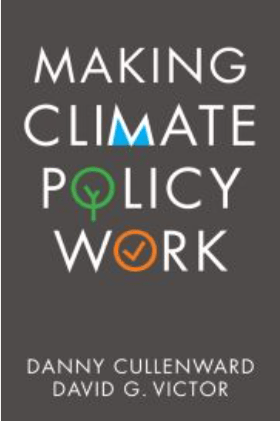
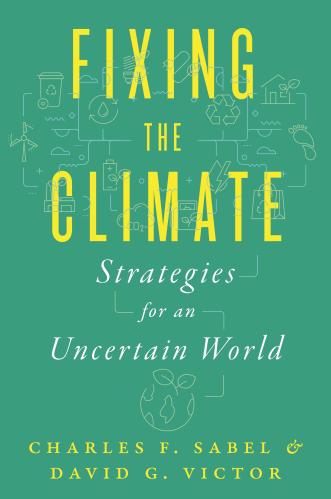
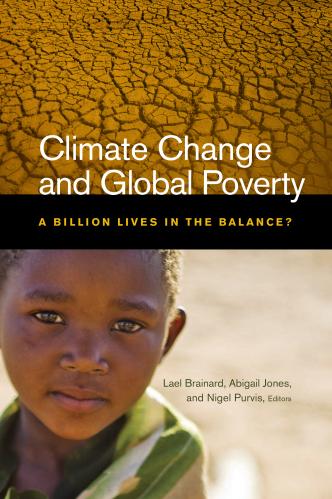
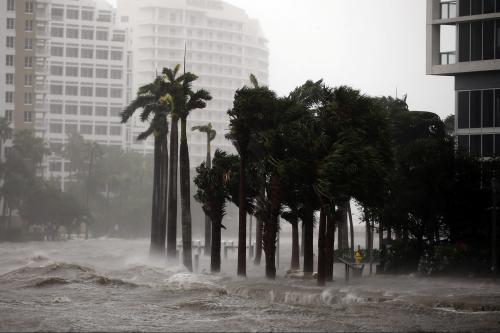

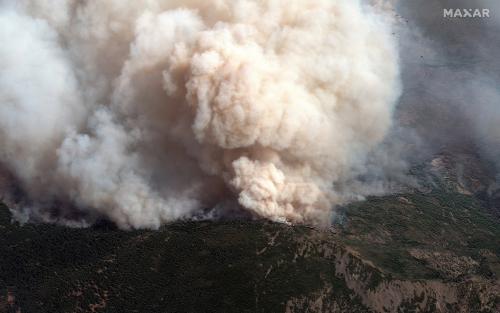






Commentary
Are federal disaster policies making the harmful impacts of climate change even worse?
March 26, 2021